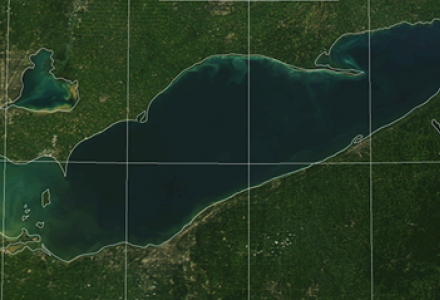
To know why salts are increasing in a river system, you need to know where they’re coming from. A project to pinpoint sources of increasing sulfate in the Red River basin hopes to help do that in coming months.
Sulfate is a type of mineral salt which forms naturally and from human activity. It has minimal ecological impacts in relatively small amounts, but high concentrations can cause a variety of problems for plants, animals and people.
Elevated dissolved salts can harm fish and aquatic critters, make humans and livestock sick, and isn’t good for irrigating crops. Elevated dissolved salts also are costly and difficult for municipal water treatment plants to remove from water.
The amount of sulfate in the Red River, which forms most of the border between North Dakota and Minnesota before flowing north into Manitoba, is naturally high compared to other similar rivers across Canada and the United States because of the underlying geology of the ground in the basin. The soil surrounding the Red River is rich in sulfate, particularly on the western side, and runoff from precipitation can wash these sulfate compounds into the river.
Groundwater in the region also contains sulfate, and when the water table rises from snowmelt and rain, these sulfate compounds intermingle with the river’s surface water. Finally, human activity in the basin can lead to sulfate entering the water system through urban development and certain kinds of crop management.
A US Geological Survey trend analysis found that the concentration of sulfate in the river, among other salts, increased between 2000 and 2015, said project lead Rochelle Nustad, US Geological Survey hydrologist with the Dakota Water Science Center. Additional data shows that sulfate concentrations have increased since the mid-1980s, Nustad added, leading to questions of why these amounts are changing. These concentrations have frequently exceeded objective amounts set by the Canadian and US governments for monitoring by the IJC’s International Red River Watershed Board.
A 2020 USGS study indicated these increases were happening consistently across the basin over time, even accounting for seasonal changes, but was unable to pin down the reason why.
“Human-related activities may be contributing to changes in water quality, but the large magnitude and overall consistency of the upward trends among tributary and main-stem sites across the basin … suggests that large scale natural processes are primarily contributing to upward trends,” Nustad said.
Nustad noted that the Red River’s climate shifted in the 1980s to a wetter state, which has increased runoff, filled surface water storage locations and increased the groundwater table. These changes in water connections appear to be linked to sulfate increases, but Nustad said it’s hard to specify exactly how much of the sulfate increase is from natural cycles and how much is from human activity at this time.
The new study conducted by USGS and funded by the IJC’s International Watersheds Initiative will couple existing data with computer models to investigate sulfate contributions from different water connections, along with chloride and total dissolved solids (other measures of salt amounts). The component data will be looped into a water model being developed for the Red River basin to quantify these amounts. On the human activity side, Nustad said the study will look at possible sources such as changes in crop types on agricultural lands and urban development near the river.
The study is expected to be completed and the final results submitted to the IJC by mid-2023, with a public release planned for late 2023.

Kevin Bunch is a writer-communications specialist at the IJC’s US Section office in Washington, D.C.




